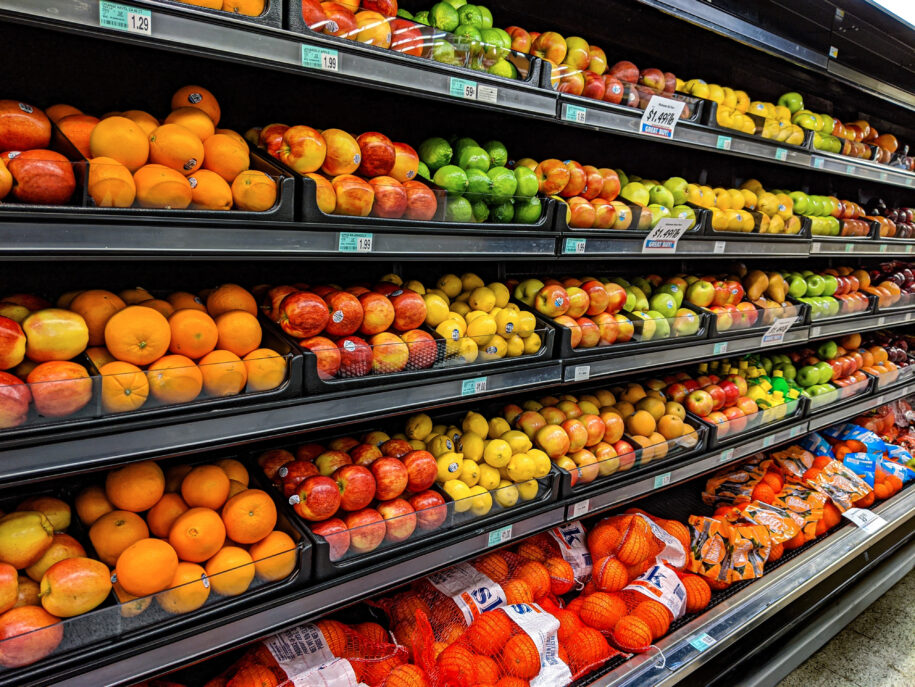Buying and reselling grocery liquidation is a great way to grow your business and improve the bottom line. To make it work, though, you should follow best practices of the trade, being mindful not to fall prey to any misconceptions about grocery closeout purchases. As experts in the grocery liquidation business, Marvell Foods has helped companies increase cash flow through grocery surplus purchases for years. Here’s what you should know so that you can make it work for your business.
What are Liquidation Groceries?
Liquidation groceries are overstocked products that grocery retailers carry as their primary inventory. Like all retailers, the grocery retailer is eager to find consumers/buyers for these unique and heavily discounted products. The distinguishing characteristic of grocery liquidation products from other liquidation products is that groceries have sell-by dates. This means that there is less depth to the inventory/products available, including perishable goods, meat, dairy, and produce.
What you will find, however, is an extensive inventory of non-perishable grocery products for liquidation that are easy to store and easy to find buyers for. This includes:
Paper goods and cleaning products
Shelf-stable items like canned goods, snack foods, and raw grains
Pet food and other pet items
Beverages
You may also come across large-scale frozen food inventories. Bear in mind that you’ll need a refrigerated truck to ensure safe shipment and, of course, have refrigeration facilities to store these products.
Types of Food Liquidation: Profitable Economic Reasons Pursue This Line of Business
Within the larger categories above, three distinct types of food liquidation products are available for purchase:
overstock groceries
customer returns
shelf pulls.
Overstock groceries are the most popular type you’ll come across. Grocers often prefer to sell these products to a secondary marketplace instead of taking up storage space with them. [This is where a “grocery liquidation specialist,” like Marell Foods, can play a role.]
Customer returns include items that customers have previously purchased and then returned. However, it’s important to note that these products are still saleable and have not been returned due to defects. While packages may be opened, you can expect that the product is still intact and suitable for sale.
Shelf pulls are items that grocery retailers have decided to remove from their shelves for internal reasons and have yet to reach their sell-by date.
The benefits of buying “shelf pull” products are that you have direct access to profit-driven inventories that still have value and that you have the potential for larger profit margins, more so than, for example, purchasing these goods on the first iteration of its sale life OR, even whether buying through a wholesaler.
How and Where to Find [The Best] Liquidation Grocery Deals/Sales
You can maximize the benefits of finding and buying liquidated grocery goods and products by working with food brokers. A well-connected food broker has contacts in a wide range of secondary markets [both buyers and sellers] who are generally unknown to the public or even many in the industry. It is a very niche-driven specialty trade. These food broker contacts can help you save money on purchases and make more money by assisting you in the purchase of undervalued spot products that your company can sell to consumers even at a significantly reduced rate that still yields generous profit margins.
Perhaps most importantly, working with food brokers means that you receive expert help on getting high-quality products for exceptional prices, so you don’t just sell for more, but you buy for less in the first place.
Quick Tips for Buying Liquidation Groceries
Ready to explore the benefits of grocery liquidation? To ensure that it works for your business, you’ll want to keep these two essential tips in mind:
Look at expiration dates. If a product is getting too close to its expiration date, you may be taking on too much risk. Unless you’ve got a buyer lined up and ready to go, stick to products that have more than a few months before they expire. Remember this, the closer the date approaches expiration, the less valuable that product becomes by the day and week. With less than a month to go on “sell by” or “best use by dates,” the saleability and price for the goods rapidly diminish. Since some loss is expected due to products going past their expiration dates, make sure to account for this factor when setting out profit goals and pricing your bid.
2. Shipping requirements. As mentioned above, some types of products (such as frozen foods) require specialty shipping methods that could be costly and/or need extra accommodations on your part. Consider what those requirements might be before bidding, and factor in seasonality if the weather will make it harder than usual to keep certain items fresh.
Work With the Industry’s Top Grocery Brokers
At Marvell Foods, we have decades of experience helping buyers navigate closeout grocery food markets. Call us today if you would like assistance either buying or selling liquidation products.

